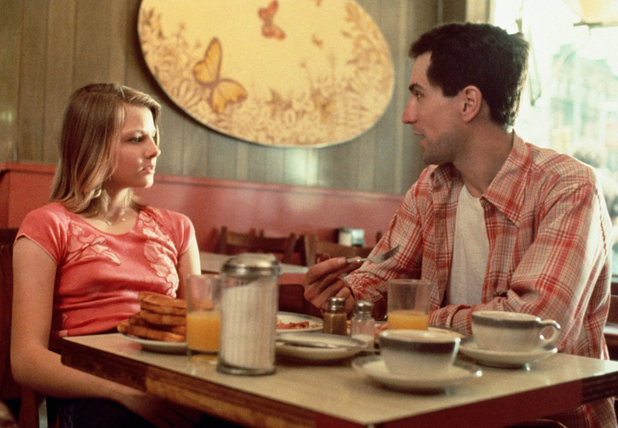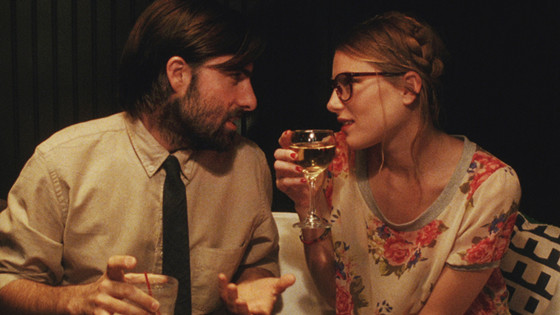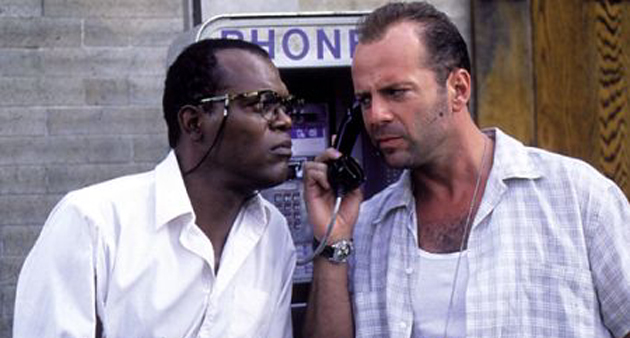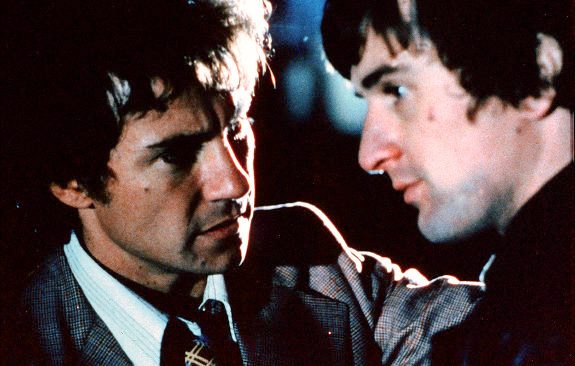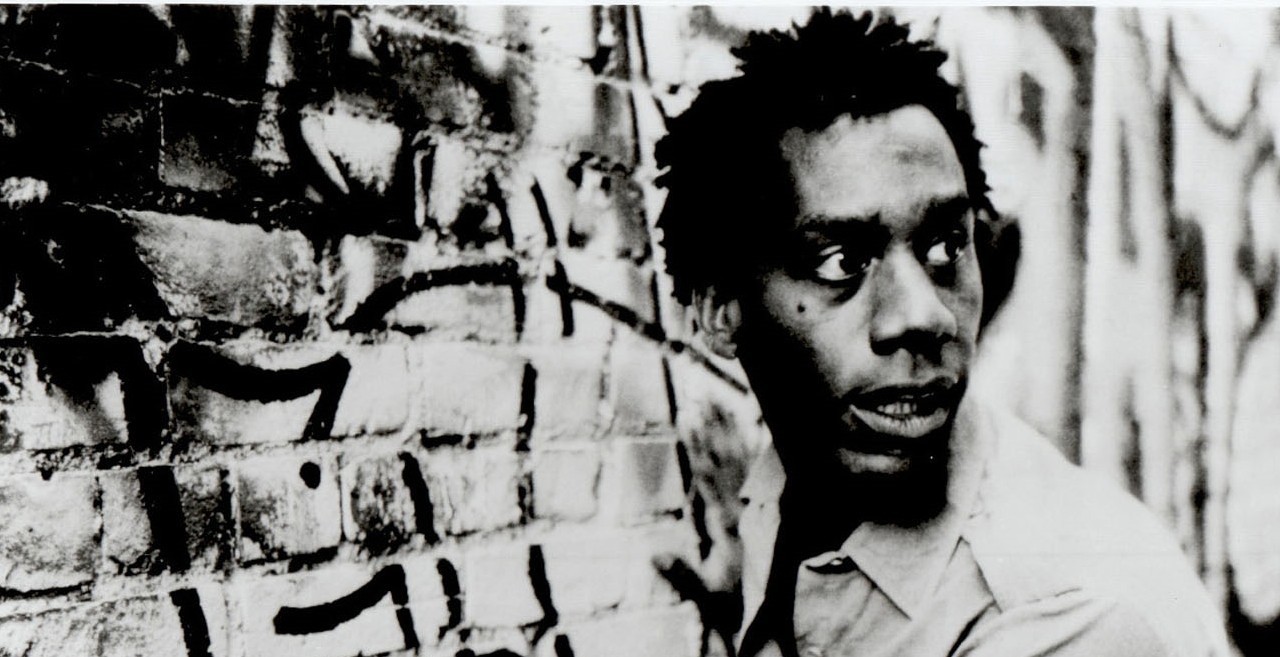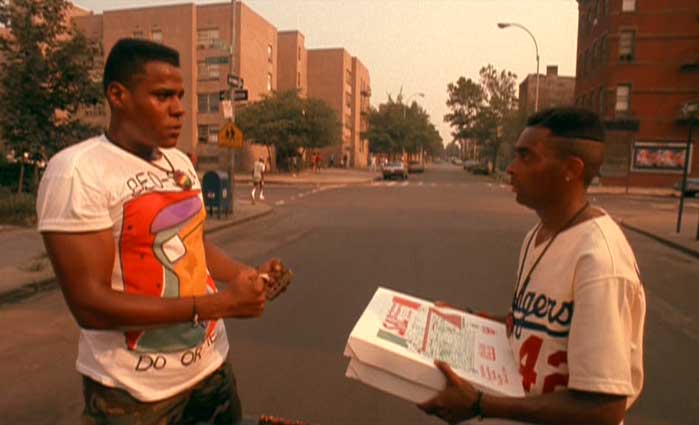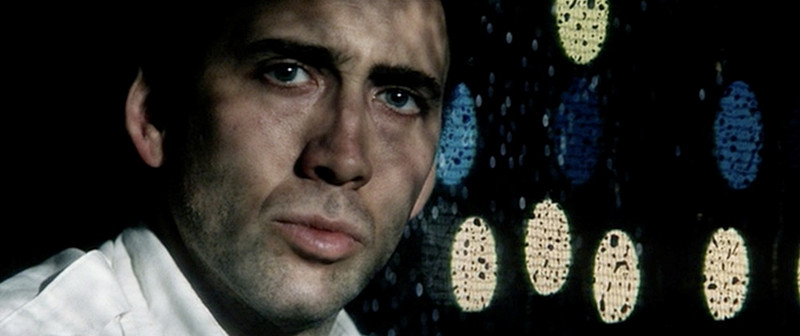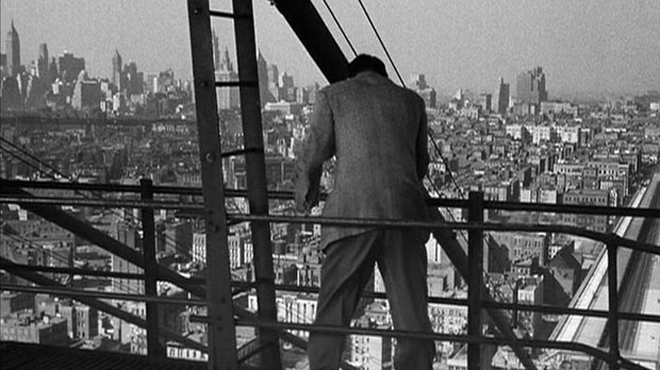8. Taxi Driver
The story goes that screenwriter Paul Schrader wrote Taxi Driver in less than a week with a loaded gun beside his typewriter. From that macabre perspective is born Travis Bickle, one of the most famous New Yorkers in movie history. “Someday a rain will come and wash all this scum off the streets.” He reacts to the city as if it were a disease. This is an artist spilling his inner demons onto the page, unfiltered.
In the title scene, Travis’s cab appears through the mist rising from the sewers and the subways, as if the city were caught on fire from below. Scorsese captures Travis’s dread in every frame, accented by a sumptuous noir-inspired score from Bernard Herrmann (it would be one of his final works before his death).
This is the New York City of Travis’s mind, a murky hellscape he navigates in his yellow chariot, riding from demon to demon. By the time he brings himself to take action, it is unclear if he’s a hero or a sociopath. “Loneliness has followed me my whole life, everywhere. In bars, in cars, sidewalks, stores, everywhere.” His is a bone-deep alienation. The city is overflowing with people, but in his mind he is all alone.
7. Listen Up Phillip
From Rushmore to HBO’s “Bored To Death,” Jason Schwartzmann has played variations on a similar mix of neurosis and arrogance. Philip is just the natural evolution of this character, in this instance a promising writer whose narcissism slowly pushes everyone around him away.
Listen Up Phillip explores the potentially unhealthy relationship between a mentor and an artist (a similar to dynamic to Whiplash, another great New York-set film from 2014). Dissatisfied with the current state of his career, Phillip moves apathetically around Brooklyn, so self absorbed that he barely pays attention to his girlfriend (Elisabeth Moss, in a supporting but essential role).
Phillip leaves New York over and over, and it ends up standing in as a symbol for everything he has given up in search of his own interests. It is a bitterly funny film, and in the same breath, a sad one: “It will be good for both of us,” he assures his girlfriend before he leaves the city (and her) on a whim for several months. “Especially for me.”
6. Die Hard with a Vengeance
The Die Hard series in part set the standard for the action franchise, in which each sequel promises that the action will only getting bigger. Die Hard 2: Die Harder, the unfortunately/brilliantly titled second film, chooses to retread the same basic stuck-in-a-single-location conceit, merely transplanted the action to a new setting. Die Hard With a Vengeance, on the other hand, opens the action up to an entire city.
It is still the same cat-and-mouse-and-explosions extravaganza, but now the plot forces our favorite sardonic action hero to navigate the big apple. From Harlem to Central Park, John McClaine pushes through pedestrians and sprints across midtown traffic to save the day. Of all the action films to plant their flag in Manhattan (including an onslaught of modern superhero films with a fetish for destruction), this may be the most fun way to roam the city.
5. Mean Streets
The New York that Martin Scorsese grew up in was tethered to his heritage. Only a couple generations removed from Ellis Island, the Italian-American road to the American Dream is its own specific experience. In Scorsese’s early masterwork, two friends in Little Italy entering adulthood are tested by the rules of the streets.
Harvey Keitel and Robert DeNiro give authentic, lived-in performances, and DeNiro’s turn as Johnny Boy would begin his ascent to stardom. Johnny Boy is a loser, causing trouble and accumulating debt. His buddy Charlie (Keitel) is always there to help him out, until he isn’t.
The filmmaker’s favorite preoccupations are on display (pop music, the mafia, and Catholicism), as they were in his debut feature a few years earlier, Who’s That Knocking At My Door?, another fantastic New York film. Mean Streets is a quick, energetic vision that launched one of the greatest filmmakers in a generation, and a prominent artistic ambassador to his hometown.
4. The Brother From Another Planet
An early film in John Sayles’s career, and one of his most bold, it is also probably his silliest. This is ostensibly a movie about an alien who resembles a black man that gets lost in Harlem. More than that, it’s a sharp social satire, about a melting pot of ethnicities that is somehow still skeptical of outsiders, and what the experience is like for that outsider as they learn the rules of this new place.
Joe Morton plays the titular alien, “The Brother” being his only moniker, a mute who escaped slavery and crash landed on Ellis Island (it’s not a subtle film, but that’s the fun of it). A man on the train tells our protagonist he has a trick. “Wanna see me make all the white people disappear?” To which the subway driver responds: “Next stop, 125th Street.” In a way it is an insider joker for New Yorkers, but we all get it: while this is a miraculously diverse place, it’s also a highly segregated one.
3. Do the Right Thing
Spike Lee’s masterpiece was shot on location in Bedford-Stuyvesant, Brooklyn, mostly on a single block. No film had, or has since, captured a sweltering New York summer so vividly, baked in the sun and dripping in sweat.
Its aesthetic is claustrophobic, and the filmmaking makes you feel like you’re stuck on the block with everyone else. It is a literal and metaphorical heat wave, and anxieties both predictable and devastating are bubbling up over at Sal’s Pizzeria. The film tackles issues that continue to be relevant; the strangely segregated nature of cities, peaceful versus violent protest, and the level of force used by the police. Its title is so well known that it’s easy to look right passed the directness of its call to action.
Do the Right Thing is a perfect encapsulation of a Brooklyn neighborhood and its residents. Buggin Out, Mookie, Radio Raheem… these characters have endured for more than 25 years, and the film remains as essential as it was the day it was released.
2. Bringing Out the Dead
One of Scorsese’s most underappreciated films points a strangely distorted, frightened eye at his home city. This New York is haunted, lost in traumatic memories, seen from the perspective of a paramedic on the graveyard shift. Sleepless and stoned, Frank (Nicolas Cage) speeds from one tragedy to the next, abusing booze and drugs in a futile effort to suppress the guilt of past failures.
Scorsese’s city is usually more literal, more realistic. With the waking nightmares Cage’s insomniac suffers, a surreal tone is set early on and held throughout. The crazed look in his eye is matched by his co-pilots Ving Rhames and John Goodman, and again by Robert Richardson’s kinetic cinematography (an Oliver Stone alum who went on to be Tarantino’s D.P. of choice).
The camera whips and tilts dramatically, implicating us in the hysteria. It forces onto us the uncomfortable sensation of being awake for 3 days straight, driving an ambulance through Manhattan’s grid from one terrible situation to the next. Frank uses his job to punish himself, but while he suffers in the streets, it may also be his savior.
1. The Naked City
Largely credited as one of the first films to prominently shoot in the actual streets of the city, rather than on a sound lot, The Naked City (1948) is the quintessential New York crime film.
It’s more a flat procedural than outright noir, and the plot is almost completely secondary to the film’s true interest: photographing New York City. Cinematographer William H. Daniels shot as much of the street scenes in secret, hiding the camera so as to keep everything as “real” as possible. Inspired by a book of tabloid photography, there is no film where New York plays a greater role than in Jules Dassin’s classic.
It has been the ubiquitous setting for romantic comedies and superheroes, musicals and disaster flicks, but no genre has better distilled New York City than the crime film. The Naked City paints it as a city full of every kind of story, good and bad, right and wrong. Though the human drama boils over, it is all merely swept up by the morning street cleaners, just in time for another story of triumph or tragedy.
“There are 8 million stories in the Naked City … this has been one of them.”
Author Bio: Ryan Jeffrey is an independent filmmaker in Queens, New York. He’s been a film buff since he was a kid, and enjoys being able to talk about the films he loves and explore what makes them great.
